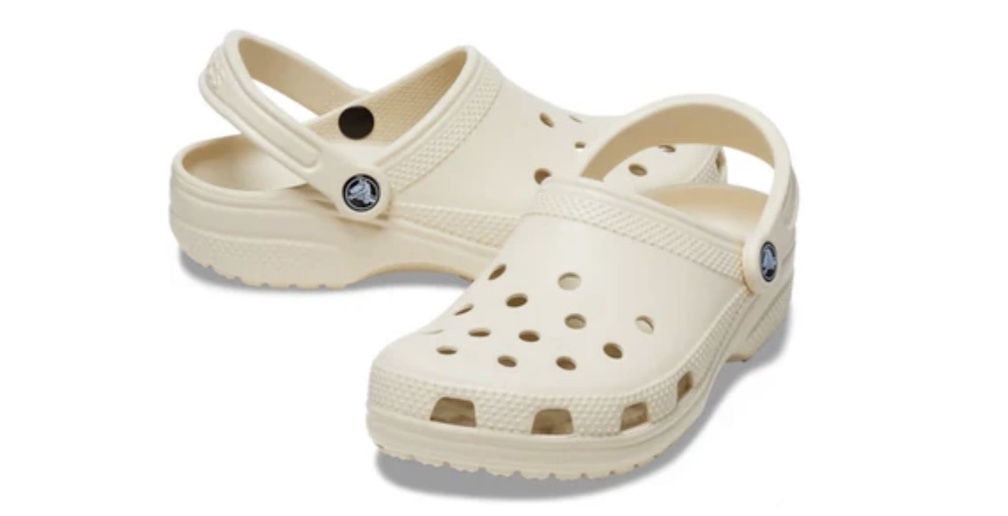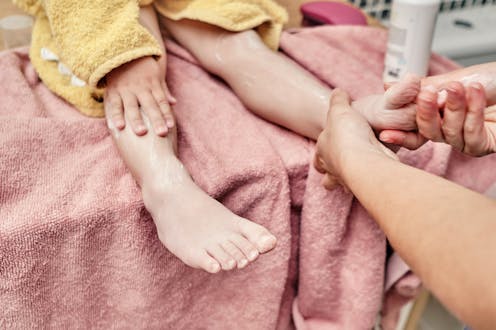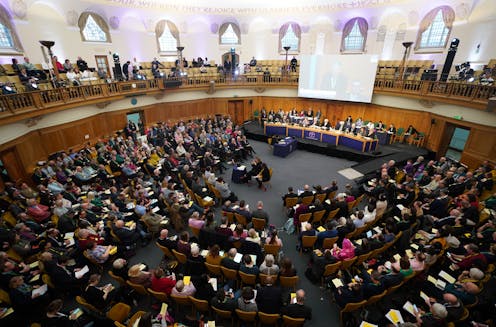Leave Barbie alone – so we can talk about how kids actually play
 Kids don't always play with toys according to the manufacturer's instructions.Charles Roark/Flick
Kids don't always play with toys according to the manufacturer's instructions.Charles Roark/FlickOn Tuesday Greens Spokesperson for women, Larissa Waters, lent her support to No Gender December – a campaign spearheaded by the group Play Unlimited that aims to highlight the gendered marketing of toys.
Over recent days, public discussions have typecast the campaign as “anti-Barbie”, with the Prime Minister attacking it as politically correct.
I’m broadly supportive of the campaign but I wonder, amid headlines screaming “War on Barbie”, if we have forgotten to discuss how and where children actually play with toys, and if this might offer another way to think about aspects of gender socialisation.
Play is a crucial site for children to test the limits of the “real” world, be creative, and imagine other ways of being.
Take Barbie. Instead of simply dismissing her as a bad role model for girls, myself and other researchers have suggested children can play with her in ways that don’t conform to gender expectations. In my household, Barbie is likely to be found head-down in the sandpit; part of some weird assemblage involving plastic spades, leaves and a waterlogged sock.
As a young girl, my best friend would take great pleasure in grinding down Barbie’s breasts against the concrete in her driveway.
Queer and feminist thinkers have argued that these kinds of unconventional play are examples of how children might disturb the “gender scripts” that they are expected to act out through their toys. Just because a manufacturer might intend for a doll like Barbie to be used in a certain way, that doesn’t mean kids will necessarily stick to the script.
It’s interesting to reflect on the fact that Barbie’s body is made of plastic – a material that is endlessly malleable and holds the potential to be molded into virtually any form. Gender theorists, such as the recently retired Australian sociologist Raewyn Connell, have advocated thinking about gender in similar ways - as a fluid and changeable, rather than rigid, concept.
The campaign group Play Unlimited makes the point that even before children can choose how to play with toys they are discouraged from selecting particular toys according to the way they are packaged. That is, boys won’t choose to play with a Barbie because it is branded as an object for girls. Likewise, girls won’t look at games in the boys' aisle.
This argument doesn’t consider how girls who play with Barbie might do so in unexpected ways, like hacking off her hair and putting her in the letterbox. Nor does it fully account for the influence different settings might have on how children interact with toys and each other.
Boys in childcare who don’t like playing “boys games” may find ready playmates in girls if they express an interest in dolls. At home, siblings of different sexes can access each other’s toys. For my sons, their sister’s pink handbags become holders for their toy cars and mobile phones.
If we look at play from this perspective, we begin to move away from thinking about children’s relationship to toys as one where their preference for certain toys is biologically driven, (boys are “hard wired” to like blue and trucks, girls are “naturally” inclined towards pink and dolls), or toys socialise children into particular gender behaviours (because toys are marketed as being for boys or for girls, children conform to these messages and the gender roles associated with them).
The fact that pink is conspicuously absent from the hottest toys this festive season – the Elsa and Ana dolls from Frozen – shows girls aren’t always destined to choose pink, nor should manufacturers be if they want to make money.
Agents of socialisation are everywhere – schools, the media, the family unit, religion, just to name a few. It’s not only through toys that kids learn how gender is done. It’s likely your children are getting lots of different messages about gender, from seeing a variety of bodies at the swimming pool (hey, not all women look like Barbie and they seem to be having a good time!) to dad cooking dinner and washing up (the kitchen play set is not just for girls!).
The structures and institutions that children encounter, and that influence their world-view, are complex and diverse. For this reason, it’s difficult to pinpoint toys as the primary cause of detrimental gender behaviours. Also, it is more than likely that children will be exposed to scenarios where they see gender norms challenged.
Just as children are influenced by a varied and complex range of social forces, so too are they capable of responding and reacting to the world around them. I imagine most parents would agree that their children don’t always passively accept the things they are told, especially if it involves doing what adults ask.
If your son’s Christmas letter to Santa asks for a football and dump truck, while your daughter requests a pink princess outfit, what’s a conscientious parent to do? Gender-neutral toys aren’t necessarily the only answer to combating gender stereotypes.
Instead of focusing on whether a toys is marketed as for girls or for boys, observing children at play and taking time to engage with children while they play is another way to address the issue.
Asking children questions about their actions (why do you think only men can be doctors? Can boys like pink?) can challenge normative assumptions about what girls and boys can or can’t do. Even if children’s responses or subsequent behaviours aren’t radically altered, the process of asking children to think about the “why”, acts as a circuit breaker to the gender status quo.
It also begins to give them the tools to reflect on the kinds of gender inequalities and differences that they will invariably encounter throughout their lives.
So perhaps it isn’t the end of the world if your kid gets a Barbie for Christmas. I loved Barbie as a child and I turned out OK. I became a feminist.
See also:Barbie for boys? The gendered tyranny of the toy store
Kim Toffoletti does not work for, consult to, own shares in or receive funding from any company or organisation that would benefit from this article, and has no relevant affiliations.
Read more http://theconversation.com/leave-barbie-alone-so-we-can-talk-about-how-kids-actually-play-34974













